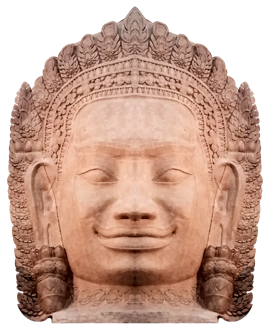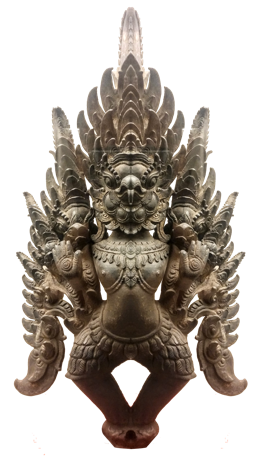BEFORE YOU BEGIN . . .
I. One Click to the Right Resource
Templemountains.org is designed for users to chart their own study of Khmer and related temple architecture. Its 3GB of new resources are segmented into short, easy-to-use, stand-alone study modules all directly accessible from its Table of Contents.
• Click "Table of Contents" at the bottom of any page or here.
• Click on any line entry to be taken directly to that module’s page.
• Click "Next" at the bottom of each page to view the following page or "Table of
Contents" to return to the list of modules.
II. Using the Table Contents
The Table of Contents lists the study modules under the following four headings:
• 14 Perspectives from which to study Khmer temple architecture; concise thematic introductions, each illustrated by specific temples, diagrams and photographs.
• A Catalog of 40 Khmer Temples listed in roughly chronological order; architectural overviews with commentary, a photographic survey and site plan.
• 10 Appendices or Background Notes on topics in Hindu and Buddhist cosmology, theology and mythology, including teaching resources, users’ comments and a time-line of Khmer events and monuments from 500 - 1431 C.E.
• More Temple Mountains: A Survey containing 12 sites to date, representing over 100 comparable monuments providing context beyond Angkor; each documented with photographs, description and analysis; (see V below for more details.)
III. For Additional Resources
• Resources on the site related to a topic are hyperlinked in red type within the text or margins of each study module.
• Click on these links and the relevant page will open in a new browser window
• To return to the original topic page click the X at the top of the new window.
• Click here or in the table of contents for teaching resources.
IV. Choosing How Much to Read
The text is color coded throughout so users can choose in how much detail to explore a topic:
• Text in black type identifies key points and useful backgroundon that topic.
• Text in gray type denotes technical material which may be skipped, including detailed explanations of the diagrams, comparisons with other architectural traditions and subjects which remain largely speculative.
V. Using “More Temple Mountains: A Survey”
• At the bottom of the Table of Contents, click on any site; a page of thumbnails surveying that site will open in a new browser window.
• Click on the thumbnail at the upper left for full-screen mode; then arrow right > to move through the images in the survey of that site.
• Click on any thumbnail for a full-screen image; then arrow right > or < left through the survey from that point.
• Click on the “I” icon at the upper right of any image; full commentary will appear in a panel to that image's left; click the “I” icon again to close the comment panel.
• Click the X at the top of the browser window to return to the Table of Contents.
More Temple Mountains: A Survey is a work in progress; it currently includes 12 sites representing 100 temples in northern Karnataka and the Yucatan documented with over 300 annotated photographs
VI. Open Source and Ad Free
All contents on templemountains.org are offered as Open Source material and are advertising-free. Teachers, students and the general public may copy, cut, revise, and repurpose, any content as they see fit, (except when otherwise credited.) Users are encouraged to credit the site and provide its URL, if they find it valuable.
VII. About This Site / Contact
Templemountains.org is a project of the Angkor and Beyond Resource Group, an informal collaboration by former visitors who wanted to learn more about these remarkable temples.None are architects, archaeologists, Khmer specialists or professional educators, simply autodidacts who have learned enough to know how much more there is to learn. Thus, the site inevitably contains errors, omissions, typos, inexact terminology and incomplete, as well as unnecessary, information. It will succeed if its deficiencies spur its users to delve more deeply into the abundant scholarly research on Angkor it has barely scratched. Questions, comments and corrections may be sent to aabrg@gmail.com; they will be incorporated in the site or on a Users' Comments page as appropriate.


